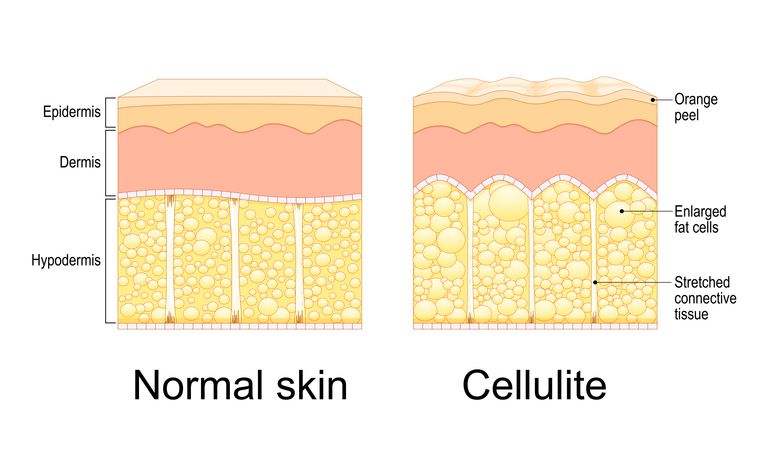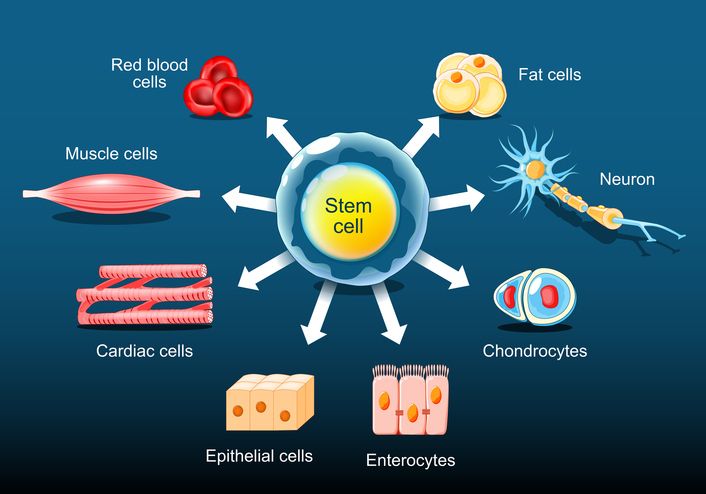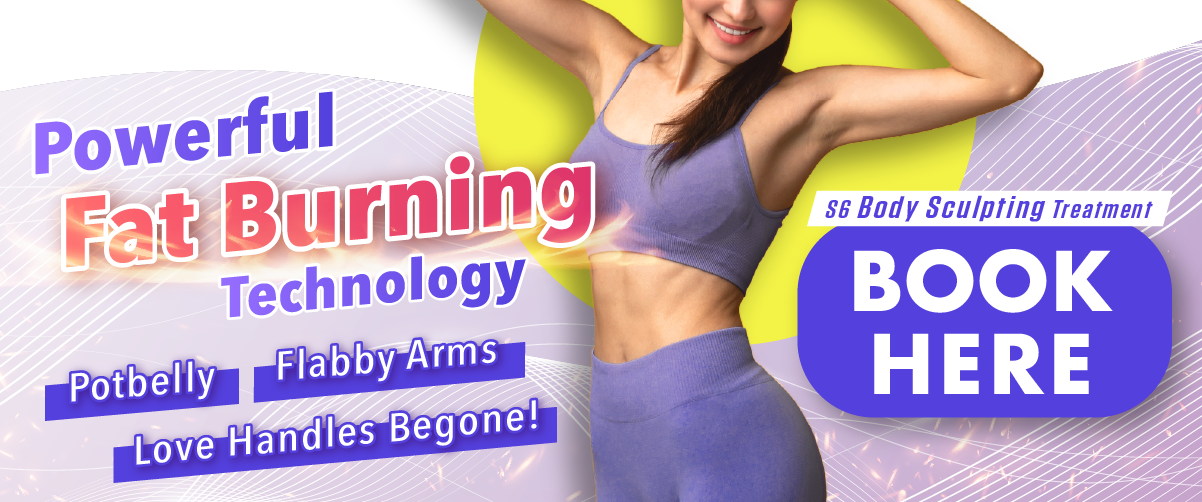
Author: Natalie Ng|Updated: 21 May 2025
You can reduce cellulite on your buttocks with a few focused exercises that activate the right muscles and improve blood flow. As fat cells accumulate and the skin loses elasticity, they start to push against the connective tissue just beneath the surface. That’s when cellulite starts to show up, creating that familiar dimpled or uneven look. It’s especially common in women and tends to appear around the hips and buttocks. Things like weight gain, body type, and how your skin changes over time all play a role. While there are treatment options like acoustic wave therapy, laser treatments, and other non invasive approaches, regular exercise is still one of the easiest and most effective ways to treat cellulite and support your skin naturally. It won’t erase cellulite overnight, but it helps tone the area, boost circulation, and improve the way your skin looks and feels. If you’re looking for a simple way to start addressing cellulite, these eight exercises are a great place to begin—keep reading to see how they can help.

Squats for Reducing Butt Cellulite

Importance of Squats for Muscle Support and Skin Texture
Squats help reduce cellulite by strengthening the muscles underneath the skin. This includes the glutes, thighs, and hamstrings. When these areas become more toned, they create a firmer base that supports the skin better. That can help smooth out uneven texture caused by fat cells pressing against weakened connective tissue.
Cellulite forms when fat cells push into the skin’s surface and get trapped between fibrous bands in the subcutaneous tissue. This creates a bumpy or lumpy look, especially common around the buttocks. Building muscle through squats supports increased blood flow and improves lymphatic drainage. These changes can help treat cellulite and support better collagen production, which is important for skin elasticity.
Squat Technique for Best Results
Start in a standing position with feet shoulder-width apart and toes turned slightly out. Keep your chest up and your back straight. Lower your body slowly, as if sitting into a chair. Your knees should stay in line with your toes and not go past them. Lower yourself until your thighs are level with the floor, or as close as feels right for your body.
Repetition Plan and Progress Tips
Begin with three sets of 12 to 15 reps, making sure your form stays strong through each round. As your strength improves, you can add more reps or increase the number of sets. You may also choose to add weights once your body is ready. Over time, squats can help reduce the appearance of cellulite and improve skin texture, especially when combined with a healthy diet and regular physical activity.

Bulgarian Split Squats for Lower Body Cellulite Reduction

Building Muscle to Target Deep Fat and Uneven Skin
Bulgarian split squats are a smart way to focus on areas where cellulite tends to appear. This single-leg movement activates the glutes, quads, and inner thighs—regions where fat cells often collect and push against connective tissue, causing a dimpled skin surface. Unlike regular squats, split squats require balance and stability, which also engages your core and deep muscle layers.
This exercise supports increased blood circulation and encourages the kind of muscle growth that helps improve skin texture and reduce the appearance of cellulite. Over time, it can help firm the affected area while also improving coordination and overall strength.
Proper Form for Best Results
Start by standing around two feet in front of a sturdy bench or chair. Rest the top of your left foot on the bench behind you. Your right foot should be far enough forward so your knee stays behind your toes when you lower yourself. Slowly lower down until your front thigh is parallel to the floor. Push back up through your front heel. Keep your chest upright and your core engaged the entire time.
Sets, Reps, and Progress
Complete three sets of 12 to 15 reps per leg. When the movement starts to feel easier, increase the weight gradually using dumbbells. This not only helps strengthen underlying muscle, but also supports collagen production and healthier skin elasticity in cellulite-prone areas.
Read More
Book Now to Experience
S6 Body Sculpting Treatment
1 Minute Self-Registration
Date should not be before minimal date

Glute Bridge Variations to Improve Skin Texture

Strengthening the Glutes to Support the Skin Surface
Glute bridges are one of the most effective exercises for building strength in the hips and glutes, where cellulite often appears. As fat cells press against weakened connective tissue, the skin can start to look uneven. Strengthening the muscle beneath helps lift and firm this area, making the skin surface appear smoother.
These movements also increase blood flow and help stimulate lymphatic drainage, both of which support healthier skin. With regular practice, glute bridges can improve circulation and muscle tone, both important for cellulite reduction.
How to Do Glute Bridges Safely and Effectively
Lie on your back with your knees bent and feet flat on the floor, hip-width apart. Press through your heels and lift your hips toward the ceiling. Your body should form a straight line from your shoulders to your knees. Lower your hips slowly, then repeat the movement.
Variations for Better Results
Once you're confident with the basic version, try adding these variations:
• Single-leg bridge: Extend one leg straight while lifting with the other. This targets muscle imbalance and activates deeper layers of glute muscle.
• Resistance band bridge: Place a band just above your knees to increase tension and engage your outer thighs.
• Elevated feet bridge: Rest your feet on a low bench or step to increase the range of motion and muscle activation.
Aim for three sets of 15 to 20 reps per variation. Squeeze your glutes at the top of each rep to maximize the effect. These variations not only build strength but also support better skin elasticity and help address cellulite in a safe, non invasive way.

Step-Ups to Build Firm Glutes and Support Skin Elasticity

Improving Muscle Definition for Smoother Skin
Step-ups are a simple but powerful way to strengthen the lower body and support areas where cellulite tends to form. This movement targets the glutes, thighs, and calves while encouraging better blood flow and muscle activation. With consistent training, step-ups help improve muscle tone, support collagen production, and may reduce the uneven surface often caused by fat cells beneath the skin.
This exercise also helps improve coordination and balance, which can benefit posture and joint stability. The more you engage the larger muscles in your legs and glutes, the more support you give the skin above them—especially in areas affected by cellulite.
Step-by-Step Form for Safe Execution
Use a solid platform about 12 to 18 inches high. Start by placing your right foot on the platform. Keep your chest up and your core stable. Push through your right heel to lift your body up until your right leg is fully straight, then bring your left foot up to meet it. Step down with control and return to the starting position.
Sets, Reps, and Progression Tips
Start with three sets of 12 to 15 reps per leg. Once you're comfortable with the movement, increase the difficulty by holding a pair of dumbbells or using a slightly higher platform. Over time, step-ups help create leaner, more defined muscle, which supports cellulite reduction by improving the strength and tone beneath the skin.
Book Now to Experience
S6 Body Sculpting Treatment
1 Minute Self-Registration
Date should not be before minimal date

Lunges to Reduce Dimpled Skin on Thighs and Glutes

Toning Multiple Muscle Groups to Address Cellulite
Lunges are one of the most effective exercises for targeting the legs and glutes, where cellulite often forms. By activating large muscle groups and promoting movement through a full range of motion, lunges help strengthen the areas where fat cells accumulate and connective tissue weakens. This can lead to better muscle tone and improved skin texture over time.
Consistent lunge training also increases blood circulation and supports lymphatic flow. These changes help the body manage excess fat and improve the skin’s elasticity, both of which are important for reducing cellulite in the affected area.
Lunge Form for Safe, Effective Training
Stand tall with your feet hip-width apart. Step one foot forward into a lunge position. Lower your body until both knees form 90-degree angles. Your front knee should stay directly above your ankle, and your back knee should hover just above the floor. Push through your front heel to return to the starting position. Keep your torso upright and your core engaged throughout the movement.
Complete three sets of 12 to 15 reps per leg. Start with bodyweight only, and once you feel stable and strong, gradually add light dumbbells.

Advanced Lunge Variations to Boost Circulation and Muscle Balance

Adding Direction and Movement to Target Cellulite More Effectively
Once you’ve built a solid foundation with standard lunges, adding variation helps activate more muscle groups and improve how your body responds to training. These dynamic movements support better blood flow, activate underused areas, and engage deeper muscle layers—all of which can help reduce the appearance of cellulite and support smoother skin.
Lunge variations also challenge coordination and balance, helping you build strength more evenly across both sides of your body.
Walking Lunges
Step forward into a lunge, then bring your back foot forward to repeat. This keeps your legs under tension longer, improving endurance and activating stabilizing muscles.
Curtsy Lunges
Step one leg behind and across your body. Lower down with control. This variation targets the outer thighs and glutes, common areas where cellulite appears due to fat cells accumulating in soft tissue.
Pulse Lunges
Hold the lunge position and pulse gently for 10 to 15 reps. These small, focused movements create sustained tension in the muscles, helping break up stubborn areas beneath the skin.
Jump Lunges
Switch legs mid-air, landing softly with bent knees. This movement raises your heart rate, increases blood circulation, and supports fat burning across your lower body.
Complete three sets of each variation. Rest 30 seconds between rounds to let your muscles recover while keeping your body in a fat-burning zone. These variations keep your workouts fresh while addressing multiple causes behind uneven skin and cellulite build-up.
Book Now to Experience
S6 Body Sculpting Treatment
1 Minute Self-Registration
Date should not be before minimal date

Progressive Resistance to Tone Muscles and Reduce Cellulite
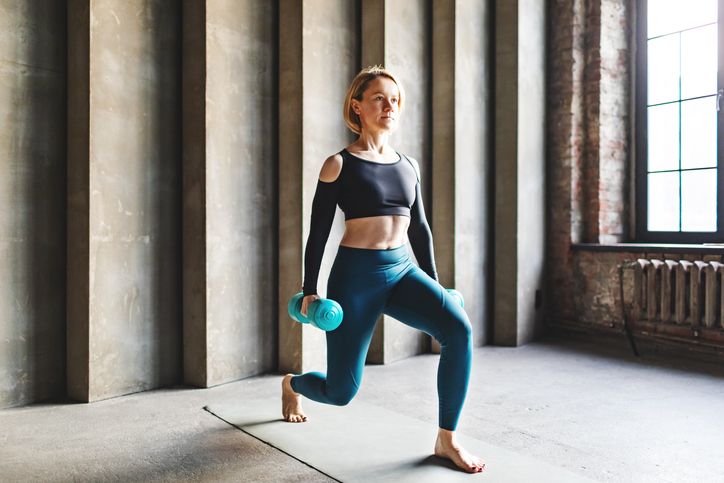
Increasing Intensity to Target Fat Cells and Strengthen Underlying Muscle
Once your body adapts to basic and advanced lunges, adding resistance helps push your results further. Progressive resistance training means gradually increasing the load to challenge your muscles more over time. This process promotes lean muscle growth, improves skin elasticity, and helps reduce excess fat—especially in areas where cellulite forms.
As your muscles grow stronger, they offer better support for the skin. This helps reduce the uneven surface caused by fibrous septae and fat cells trapped beneath the skin’s top layer.
Steps to Add Resistance Safely
Start with bodyweight lunges until your form is solid. Once comfortable, begin adding light dumbbells. Aim to increase weight every two to three weeks, depending on how your body responds.
• Begin with 5-pound dumbbells
• Move up to 8–12 pounds after two weeks
• Progress to 15–20 pounds by week six
• Perform 3 sets of 12–15 reps each time
Focus on slow, controlled movements. Avoid rushing. This helps stimulate blood circulation and ensures the muscle is doing the work—not momentum. With steady progression, resistance training becomes a reliable tool to treat cellulite and improve both strength and skin texture.

Deadlifts to Strengthen Glutes and Support Cellulite Reduction
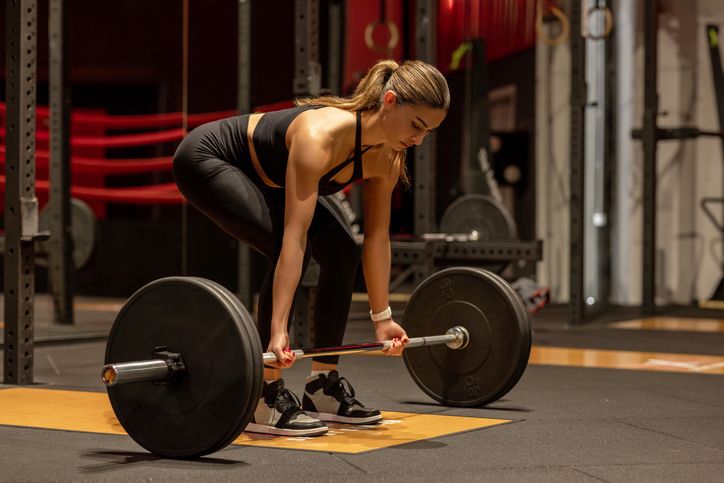
Building Deep Muscle and Improving Lower Body Definition
Deadlifts are one of the most effective exercises for targeting large muscle groups in the lower body. This includes the glutes, hamstrings, and lower back—all areas that play a direct role in the structure beneath the skin. As these muscles become stronger, they help improve the look of skin that has a lumpy or uneven surface caused by deep fat and weakened connective tissue.
This movement also supports improved blood circulation and encourages fat burning, which is important for reducing the appearance of cellulite, especially in the buttocks and upper thighs.
Proper Deadlift Form to Avoid Injury
Start with your feet hip-width apart and a barbell or dumbbells in front of your shins. Keep your chest lifted and your back straight. Hinge at your hips, reaching down to grasp the weight. Keep the weight close to your body as you lift, pressing through your heels and squeezing your glutes at the top. Lower with control, keeping your posture steady throughout.
Sets and Reps for Results
Begin with two to three sets of 8 to 12 reps. Use a weight that challenges your muscles but still allows you to keep perfect form. As your strength improves, increase the weight gradually. With consistent practice, deadlifts help shape the lower body, promote muscle definition, and support the skin’s structure—making them a key exercise in any cellulite reduction plan.
Book Now to Experience
S6 Body Sculpting Treatment
1 Minute Self-Registration
Date should not be before minimal date

Kettlebell Swings to Burn Fat and Improve Circulation
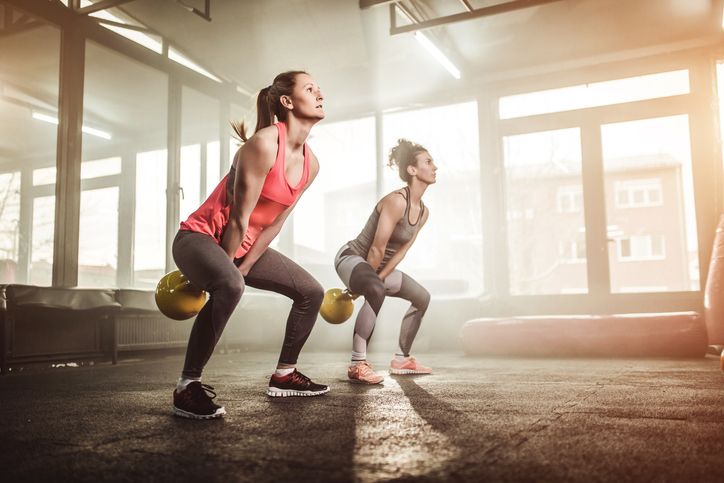
Using Full-Body Movement to Target Cellulite-Prone Areas
Kettlebell swings combine strength and cardio in one powerful motion. They activate the glutes, hamstrings, and core while promoting fat loss and increased blood flow—both important for addressing cellulite. As fat cells break down and circulation improves, the skin surface may appear smoother and firmer over time.
This movement also stimulates the deeper layers of muscle, which helps support the tissue under the skin. When done regularly, kettlebell swings can assist in reducing the buildup of excess fat and help treat cellulite in the lower body.
Technique for a Safe and Effective Swing
Start with your feet shoulder-width apart and a kettlebell placed slightly in front of you. Hinge at your hips, keeping your back flat, and grasp the handle with both hands. Swing the kettlebell back between your legs, then drive your hips forward to bring it to shoulder height. Let the momentum carry it up—your arms guide, but your power comes from the hips and glutes.
Workout Plan and Weight Choice
Begin with three sets of 15 reps using a light kettlebell, around 15 to 20 pounds. As your form improves and your strength increases, raise the weight gradually. Focus on explosive movement from your hips, not your arms. This keeps the pressure on the right muscles and supports cellulite reduction by engaging large areas of deep tissue and boosting overall

Plyometric Exercises to Boost Circulation and Reduce Cellulite
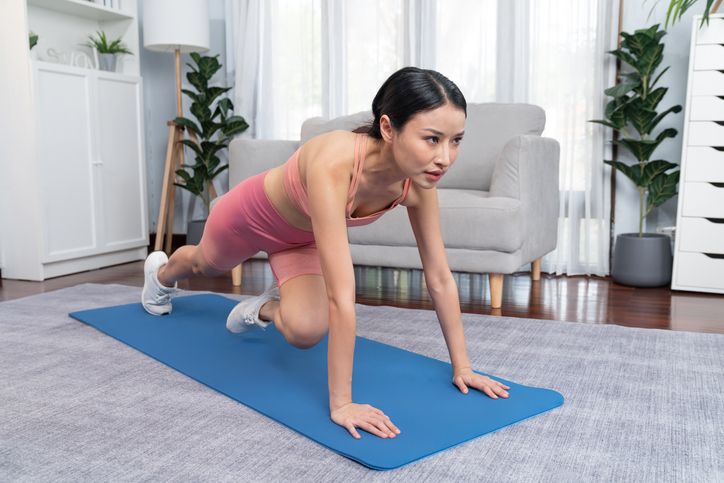
High-Intensity Movements to Target Fat and Strengthen Skin Support
Plyometric exercises use explosive movements to activate muscles quickly and powerfully. These high-energy exercises increase heart rate, improve blood flow, and help burn excess fat—all essential for reducing cellulite and supporting smoother skin texture. The dynamic nature of these movements also improves coordination and helps stimulate the underlying muscle that supports the skin surface.
By combining strength and cardio, plyometrics help address multiple causes of cellulite at once, including poor circulation, weak connective tissue, and fat cell buildup.
Key Plyometric Moves for Lower Body Results
Focus on short sets with proper form, allowing recovery between rounds:
• Jump Squats: Lower into a squat, then jump straight up and land softly.
3 sets of 12 reps, rest 30 seconds
• Box Jumps: Jump onto a stable platform and step down carefully.
3 sets of 10 reps, rest 45 seconds
• Split Jumps: Jump from a lunge position, switching legs in the air.
3 sets of 15 reps, rest 30 seconds
• Burpees: Combine a squat, plank, and jump for a full-body burn.
3 sets of 8 reps, rest 45 seconds
Start with two sessions per week. Focus on landing softly and keeping your core engaged. These movements not only help reduce the appearance of cellulite, they also support overall lower-body strength and endurance.
Alongside regular exercise, adding targeted support can help speed up results—especially in areas where cellulite is more stubborn. While movements like squats, lunges, and deadlifts strengthen the muscles beneath the skin, they don’t directly remove fat cells or address deeper buildup in the tissue. This is where non-invasive treatments like the S6 Body Sculpting Treatment come in. Designed to work alongside your fitness routine, it helps break down fat more efficiently and enhances the smoothing effects of your workouts, particularly under the buttocks where cellulite is harder to shift.

S6 Body Sculpting Treatment to Boost Cellulite Reduction Results
Supporting Muscle Workouts with Technology That Targets Fat Cells Directly
While regular exercise is essential for building muscle and improving blood flow, some areas—like the lower buttocks—can hold on to stubborn cellulite. This is often due to deep fat deposits that sit beneath the skin’s surface and press against weakened connective tissue. The S6 Body Sculpting Treatment offers a non-invasive way to target fat cells in these problem spots and enhance the results of your workouts.
This treatment uses a combination of bio-laser and vacuum suction technology to break down fat cells in the subcutaneous tissue. Once the fat cells release fatty acids, vacuum suction helps stimulate lymphatic drainage, flushing them out naturally. By directly addressing adipose tissue, this method helps smooth out the uneven skin surface caused by fat beneath the skin—especially underneath the buttocks, where cellulite often forms.
How the Treatment Works
• A trained consultant assesses your body and selects the treatment area
• Bio-laser beams penetrate the fat layer and break down fat cells
• Vacuum suction encourages lymphatic drainage to remove broken-down fat
• Treated fat is naturally expelled without affecting surrounding tissues
This process helps reduce deep fat, support blood circulation, and improve the appearance of cellulite without surgery, needles, or long recovery time.
Why It Works for Cellulite in the Buttocks
• Focuses on spot treatment for areas like the lower buttocks, thighs, and hips
• Encourages collagen production and improves skin elasticity
• Helps address mild cellulite and pronounced cellulite caused by fat cells accumulation
• Complements your exercise program by accelerating visible results
Advantages of the S6 Body Sculpting Treatment
• Painless and non-invasive: No wounds or downtime required
• Targets 7 major body areas, including underneath the buttocks
• No rebound effect: Destroyed fat cells are excreted and don’t return
• Quick and convenient: Fits into busy schedules without affecting daily life
For those working to reduce butt cellulite, this treatment adds a boost to your routine, helping you achieve smoother skin texture and lasting results.
Book S6 today and take the next step in your cellulite reduction journey.
New Beauty's S6 Body Sculpting TreatmentBook Now to Experience
S6 Body Sculpting Treatment
1 Minute Self-Registration
Date should not be before minimal date
FAQ
1. Can weight loss alone get rid of cellulite?
Weight loss may reduce the size of fat cells, which can help lessen the appearance of cellulite, but it won’t remove it completely. Cellulite affects both slim and curvier body types because it also involves connective tissue, skin elasticity, and circulation. That’s why even with a healthy diet and exercise program, cellulite can remain visible. A combination of regular exercise, skin treatments, and non-invasive technologies like acoustic wave therapy or laser treatments can provide better long-term results.
2. What causes cellulite to become more visible after weight gain?
When you gain weight, fat cells expand and can push further against the skin, creating more tension in the fibrous septae and worsening the uneven skin texture. As the fat beneath increases, the connective tissue stays fixed, which causes the familiar lumpy or orange peel look. This is why areas like the thighs, buttocks, and upper arms often show more pronounced cellulite after weight gain.
3. Are cellulite treatments safe for all skin types and tones?
Many non-invasive cellulite treatments like vacuum suction, infrared light, and bio-laser therapy are considered safe for most skin types. Since they do not rely on heat that targets melanin or involve invasive procedures, the risk of prolonged skin discoloration or skin damage is low. Still, it’s important to consult with a trained specialist, especially if you have sensitive skin, deep fat layers, or other underlying skin conditions.
4. Can cellulite appear in areas besides the thighs and buttocks?
Yes, cellulite can also develop in areas such as the upper arms, calves, belly, and even above the knees. These areas may show the same uneven skin surface due to fat cells accumulating in the subcutaneous tissue. Localized cellulite in these spots may require targeted treatment options depending on the severity and distribution of the adipose tissue.
5. Is cellulite a cosmetic or systemic issue?
Cellulite is mainly a cosmetic concern, but it is influenced by systemic factors such as blood flow, hormone levels, lymphatic function, and genetics. Poor circulation, fluid retention, or reduced collagen production can all contribute to how cellulite forms and becomes visible. While it's not harmful to your health, addressing it often requires a combination of systemic support—like improved lymphatic drainage and blood circulation—and localized strategies to get noticeable results.
Recommended Articles
COPYRIGHT© NEW BEAUTY MANAGEMENT LIMITED 2025. ALL RIGHT RESERVED.

